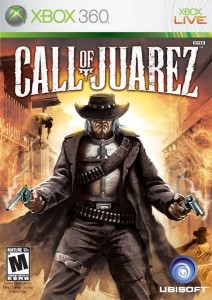The past couple of weeks, I’ve been mostly MIA from this site, at first because Jean, Sasha and I were in Taiwan visiting Jean’s family, and then because I was wandering around Indonesia on my own. Now, however, we’re all back together in Brooklyn—and with a few new additions to the household.
That is, we have a new boxful of crap for Sasha to play with. Taiwanese crap. Electric, light-up, dance-music-playing crap. A dildonic neon maraca. A spasmodic robot frog that crippledly jumps and jives. Toddler-size sneakers whose hair-trigger LEDs scar the corneas of unfortunate passersby. And a Teddyvision, whatever the fuck that is.
The sneakers, luckily, have already been hidden away, and I’m hoping that the rest of it will break or disappear in the near future. I hate this stuff not just because it’s horrible, unimaginative, chintzy dreck that serves only to clog our landfills with poisonous chemicals. No, I hate this stuff because it’s simply stuff. Jean and I have so far resisted buying Sasha lots of toys: We don’t want to be the parents who every weekend wind up adding to the pile of plastic junk in the living room. Which is not to say we buy her nothing—there’s that box of Duplo blocks, and the magnetic dress-up dolls, which she loves. Oh, wait! Actually, I think those were all presents from other people. Which maybe shows we’re doing the right thing.
This reluctance to buy Sasha toys has, on top of everything, a certain philosophical ulterior motive. What I’m trying to do is to make Sasha bored. Sure, she’s only 2, so it may be too early, but I want her not to rely on a constant flow of new toys to keep her amused. She needs to learn how to do it herself. And for the most part, she can, so far. It’s not uncommon for her to play with her Corolle doll, Baby (a worthy purchase), or one of the 10-cent tchotchkes that’s come from who-knows-where, like the plastic fairy from the dentist’s office, and to with total concentration invent bizarre scenarios for them. What did Baby do to deserve that Time Out? Only Sasha knows. But it’s wonderful to watch her figure it out.
Apparently, this all means something. In other words, I’m not the only one who sees the value, in our modern-day world of constant entertainment, of boredom. Over at plucky DadWagon subsidiary Slate.com, Matt Feeney looks at David Foster Wallace’s posthumous novel The Pale King through the lens of boredom:
On one hand, defending boredom seems stern and unsympathetic, like a Depression-born mom impatient with her complaining children. (Hi, Mom.) But the depression-era parent urged a kind of stoicism, bearing-up against fake or minor suffering as a moral lesson of childhood. For today’s middle-agers, relishing the image of a teenager thrown into fidgets by a dead cellphone, boredom is not merely fake suffering. It’s important in its own right, a state of latent fertility. It leads to creativity. The contemporary defender of boredom is not a stoic. She’s a graying humanist, the martinet as art teacher.
Actually, Feeney takes his time getting around to discussing Wallace and boredom, but when he does it’s to point out that Wallace doesn’t actually share this Romantic view of idle time:
But The Pale King takes boredom beyond the latently redemptive or secretly terrifying lack of stimulation. It imagines boredom as complete immersion in tedious experience. For the characters in The Pale King, boredom is something that comes at you, relentlessly, redundantly. It is inescapable. There is no layer of inspiration or freedom beyond or beneath it, which you might access through one of the Romantics’ escape hatches.
Here, I think, Wallace is both right and wrong. His novel is set in the early 1980s, before Entertainment became as ubiquitous as it is today. In fact, you can read his Infinite Jest as the answer to the question posed by The Pale King: How do we deal with the miseries of boredom? By submerging ourselves in electronic gadgetry and narratives, eventually losing all ability to function outside of our identities as viewer-readers, possibly to the point where removing the Entertainment from our lives causes death or, worse, madness. Ah, good old David Foster Wallace—how we’ll miss you!
But of course, that point of view is crafted by a clinically depressed genius. Me, I subscribe to the more Romantic view, I guess. I, too, remember days of boredom: coming home from school and not knowing what to do, despite having a roomful of Legos and Star Wars figures, a backyard with a creek running through it, and friends and siblings to play with. “I’m bored” was a line often heard around my house, and yet somehow I survived that boredom. I played, I kept myself busy, I learned to inhabit my own mind. And even today I employ those same strategies, whether I’m on a 16-hour flight to Hong Kong or just stuck on the F-train with nothing new on Instapaper. I have what elementary-school art teachers want their kids to have: imagination. Perhaps even an overactive one.
The short version of all this: Being bored as a kid teaches you not to be as an adult.
And the corollary: The best toys we can give our kids are the ones that are, somehow, deficient. Toys that need to be assembled, that lack whiz-bang features, that require the kids to come up with storylines, motivations, action. These toys don’t just stave off boredom—they inoculate against it.



